Winter has some hidden delights. One plant in this category may involve several of our senses in the hunt for its flowers and bounty.
Honeypots, Acrotriche serrulata, can confuse even an experienced amateur botanist, as the apparent developing terminal flowers are actually bundles of new leaves— clustered buds are located on the hard stems at the base of the plant.
 New leaves of Honeypots
New leaves of Honeypots
But care is needed, as the small pointed leaves are very prickly. When they flower later this month, I will certainly be navigating the prickles in order to see and taste the delicious nectar to be found in the inflated flowers. I always like to check for competitors, be they birds, ants, or other small creatures who will also be after the tasty sweetness.
 Honeypots
Honeypots
Along the coastal pathways look for new flowers appearing on the small leaved bushes of Thyme Rice-flower, Pimelea serpyllifolia subsp. serpyllifolia. At the time of writing I found several of the female plants developing compact terminal heads of small yellow flowers, but few of the male plants had yet developed their slightly showier flowers with orange stamens.
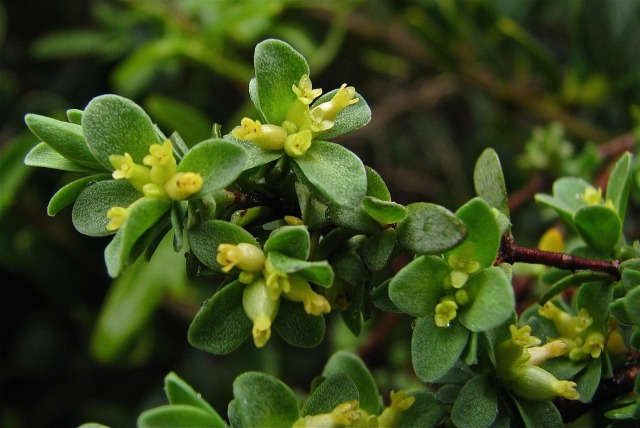 Thyme Rice-flower (female)
Thyme Rice-flower (female)
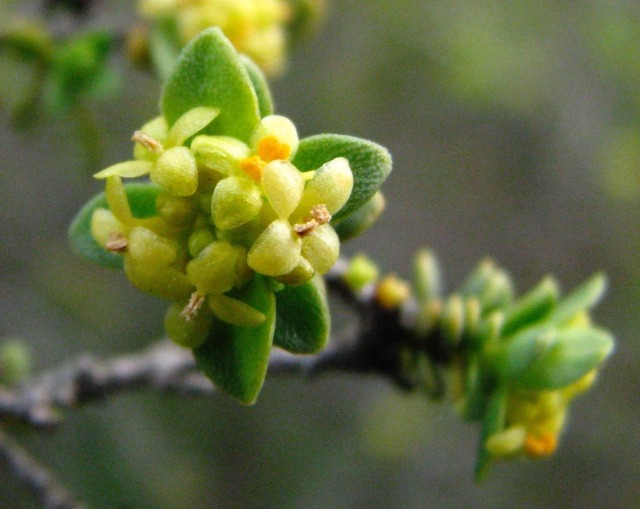 Thyme Rice-flower (male)
Thyme Rice-flower (male)
Varnish Wattle, Acacia verniciflua, a common wattle with long, narrow, tapering leaves (phyllodes) should soon be developing deep yellow, globular flower-heads. When they are in bud, I always feel they have hundreds of pairs of eyes looking at me. The slightly sticky, pale, fresh phyllodes are worth feeling, and give rise to the common name.
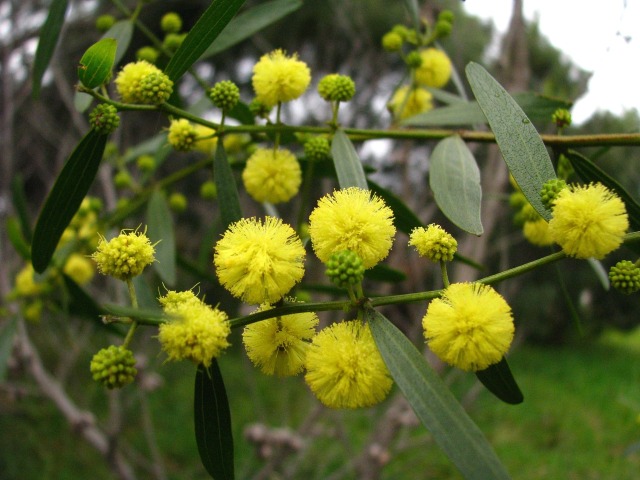 Varnish Wattle
Varnish Wattle
In the heathlands I have been surprised to see flowers on the low bushes of Common Beard-heath, Leucopogon virgatus var. virgatus. These clusters of small white flower with fluffy edges are always nice to come across. I thought I needed to wait until spring, but Flowers of Anglesea and Aireys Inlet says they also appear in winter.
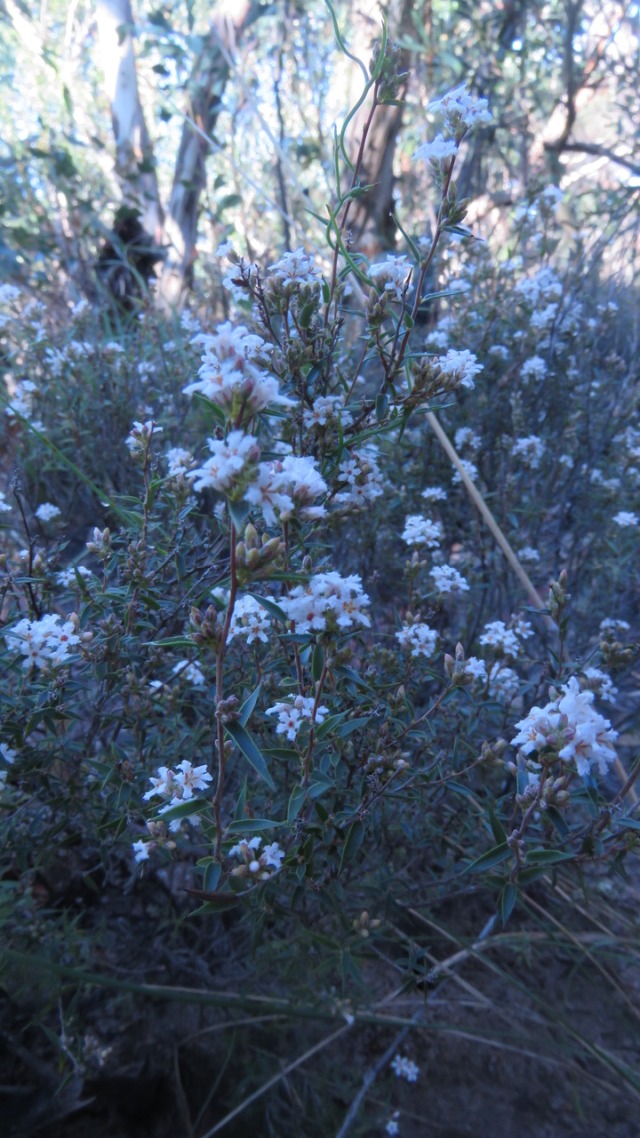 Common Beard-heath
Common Beard-heath
Since reading a most interesting article in the Murrumbidgee Naturalist entitled To Twine to the Left or to Twine to the Right, my winter walks are taking on whole new focus. Botanists, including Darwin, have had a number of theories about the causes of the behaviour of coiling plant tendrils. It was initially thought to be due to them bending towards the light, and also perhaps to do with whether they grew in the northern or southern hemispheres. Darwin ‘proved that the bending action was controlled by the growing tips’. Later researchers ‘discovered that the controlling agents were found to be auxins (plants’ equivalents of hormones) formed only by the growing tip and …that these auxins actively migrated to one side of the tip to promote the extra growth there’. Darwin ‘concluded that the gyration of the growing tip is extenuated in twiners resulting in wrapping the stem around the support’. He likened it to whirling a rope around your head and then letting the free end hit a post. The end immediately coils around the post. But what of the way the coils go? Darwin looked at his 40 climbers and found 27 were right-handed (growing from bottom left to upper right) and the other 13 left-handed. That was a clear statistical difference. In 2007 a New Zealand ecologist showed that 92 per cent of the world’s twining plants twine to the right —regardless of which hemisphere they grow.
The question for us is, which of our native climbers are right-handed and which are left-handed? Wonga Vine and Twining Fringe-lily are right-handed, the rest are a mystery. On my walks I could only find right-handed climbers, such as Love Creeper, Small-leaved Clematis and the Climbing Sundew.
 Love Creeper
Love Creeper
 Small-leaved Clematis
Small-leaved Clematis
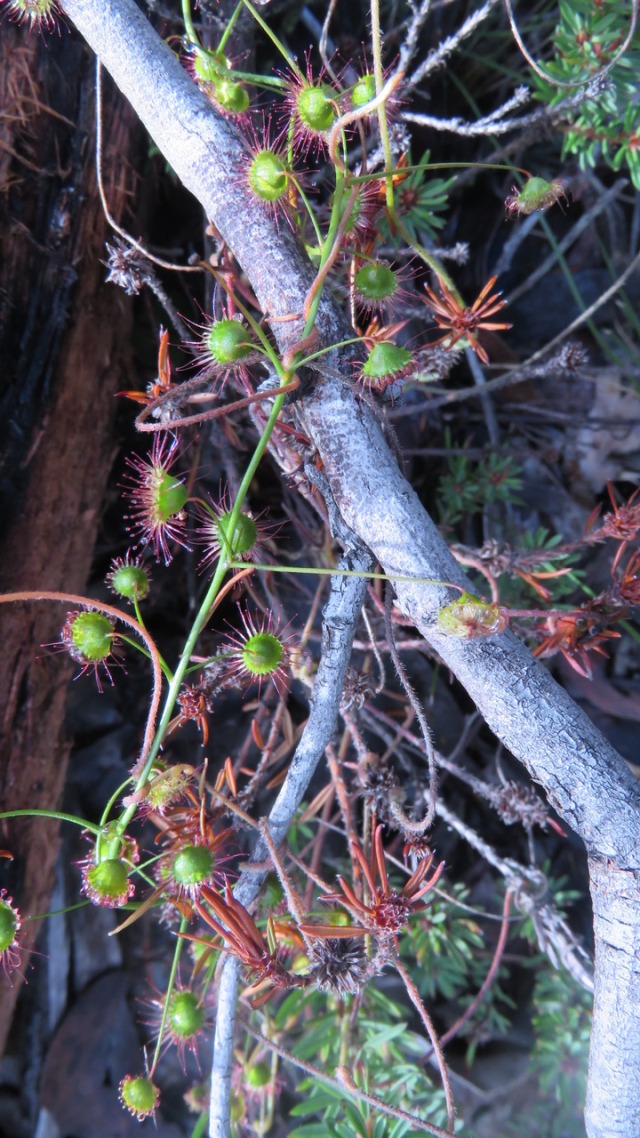 Climbing Sundew
Climbing Sundew
I would be interested to know if anyone finds any left-handed twiners. There is always something new to learn…have fun!
Ellinor Campbell